- Nikki James
- https://www.linkedin.com/in/nikkijames1/
- Research Associate
- Virtual Internships: A technology enhanced model for broadening participation in STEM based experiential learning
- Northeastern University
- Kemi Jona
- https://www.linkedin.com/in/kemijona/
- Asst Vice Chancellor-Digital Innovation
- Virtual Internships: A technology enhanced model for broadening participation in STEM based experiential learning
- Northeastern University
Virtual Internships: A technology enhanced model for broadening participation...
NSF Awards: 1725941
In 2017 our research team began a design based educational research project to build and examine how a technology-enhanced virtual internship could broaden participation in STEM-based experiential learning for non-traditional, under-represented and adult learners who are unable to access traditional models of experiential learning like internships and co-ops. Three years into the research the COVID-19 pandemic results in a swift transition to remote work and learning; and a rapid decrease in internship and co-op opportunities. Our research team saw a golden opportunity to serve aa a larger number of students with the virtual internship model we had been developing while simultaneously gaining more data to evaluate the model and answer our implementation based research questions.
A quick pivot in how we were implementing the virtual internship model enabled us to open up participation in the research to multiple community colleges, state schools and private universities all serving STEM students. Over the last 12 months, the virtual internship intervention has opened up access to an experiential learning opportunity for more institutions and students that the three previous years combined.
This video will provide an overview of our research journey and what we have learned while also presenting the model and its impact on students, industry partners and faculty who are using the virtual internships in their classrooms.
Virtual Internships: A technology enhanced model for broadening participation...
NSF Awards: 1725941
In 2017 our research team began a design based educational research project to build and examine how a technology-enhanced virtual internship could broaden participation in STEM-based experiential learning for non-traditional, under-represented and adult learners who are unable to access traditional models of experiential learning like internships and co-ops. Three years into the research the COVID-19 pandemic results in a swift transition to remote work and learning; and a rapid decrease in internship and co-op opportunities. Our research team saw a golden opportunity to serve aa a larger number of students with the virtual internship model we had been developing while simultaneously gaining more data to evaluate the model and answer our implementation based research questions.
A quick pivot in how we were implementing the virtual internship model enabled us to open up participation in the research to multiple community colleges, state schools and private universities all serving STEM students. Over the last 12 months, the virtual internship intervention has opened up access to an experiential learning opportunity for more institutions and students that the three previous years combined.
This video will provide an overview of our research journey and what we have learned while also presenting the model and its impact on students, industry partners and faculty who are using the virtual internships in their classrooms.
-
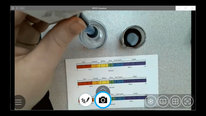 Virtual Science Teaching Strategies in Response to Pandemic
Virtual Science Teaching Strategies in Response to Pandemic
Sabrina Stanley
-
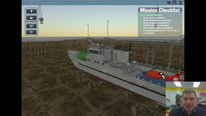 FLEET: Virtual Engineering Video Game
FLEET: Virtual Engineering Video Game
Michael Briscoe
-
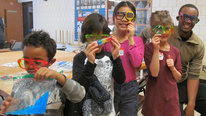 Leveraging Expertise: 4-H and the Chemistry Research Lab
Leveraging Expertise: 4-H and the Chemistry Research Lab
Anne Stevenson
-
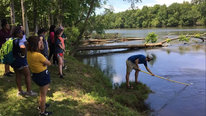 STEM Educator Recruitment Through Summer Experiences
STEM Educator Recruitment Through Summer Experiences
Kelly Costner
-
 Research on Museums, STEM & Social Issues
Research on Museums, STEM & Social Issues
John Fraser
-
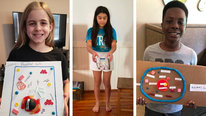 teachHOUSTON STEM Interactive: STEM Accessible Worldwide
teachHOUSTON STEM Interactive: STEM Accessible Worldwide
Paige Evans
1994 Views
Continue the discussion of this presentation on the Multiplex. Go to Multiplex
1994 Views
presentation
has been viewed
Related videos you might be interested in...
-
 Virtual Science Teaching Strategies in Response to Pandemic
Virtual Science Teaching Strategies in Response to Pandemic
Sabrina Stanley
-
 FLEET: Virtual Engineering Video Game
FLEET: Virtual Engineering Video Game
Michael Briscoe
-
 Leveraging Expertise: 4-H and the Chemistry Research Lab
Leveraging Expertise: 4-H and the Chemistry Research Lab
Anne Stevenson
-
 STEM Educator Recruitment Through Summer Experiences
STEM Educator Recruitment Through Summer Experiences
Kelly Costner
-
 Research on Museums, STEM & Social Issues
Research on Museums, STEM & Social Issues
John Fraser
-
 teachHOUSTON STEM Interactive: STEM Accessible Worldwide
teachHOUSTON STEM Interactive: STEM Accessible Worldwide
Paige Evans


Mesut Duran
Professor of Technology
--Enjoyed learning about this very timely and interesting research. Can you share some more info about the impact of the virtual internship from the perspective of participating students, industry partners, and faculty? Thanks, Mesut
Nikki James
Nikki James
Research Associate
Hi Mesut, Thanks for visiting and checking out our work. We are in the last six months of the research project at the moment so we are in the process of evaluating the outcomes of the virtual internship more systematically. However, we have seen students gain full-time internships and jobs, extend summer internship engagements into the academic year, and perhaps more importantly gain confidence in their skills and abilities. On the faculty and internship coordinator side, we have seen the virtual internship model implemented in many different ways to address a variety of challenges faced during 2020 and 2021. One community college re-designed its computer science capstone course embedding the virtual internship intervention as a way to bring industry partners into the classroom to support the students. I watched the students demo their final projects last week and they were brilliant. Another community college faculty member who uses the virtual internship in their course likes that it is an activity where the students can not cheat or find answers online from past students because the project changes based on the industry partner.
Mesut Duran
Professor of Technology
Thank you, Nikki. This additional info is very helpful. Best, Mesut
Nikki James
Research Associate
Hello Everyone, Thank you for stopping by and checking out our Virtual Internship project. We've learned a lot about implementing technology-based education interventions into different educational contexts over the past few years. We've implemented this intervention into Summer Youth Employment Programs, Career and Technical Education schools, community colleges, and engineering schools to name a few. One thing we're interested in hearing from you is how you would use this model in your educational context (whatever it may be). We've worked to create a flexible and adaptable model so that it can be used in a variety of different contexts. Sharing how you would use it in your class or situation will help us test that theory.
Alexander Rudolph
Professor of Physics and Astronomy
I enjoyed learning about how virtual internships help students stay engaged during COVID and also help them develop their non-academic skills (I prefer socioemotional competencies as more of a positive than negative name for this important skillset). I am especially intrigued by the software you developed to track student progress and identify potential issues. As someone who runs a large mentorship program, I wonder how we might replicate such a system. Did you have professional help? How was that funded?
Nikki James
Research Associate
Hi Alexander, Thanks for visiting our project page. The software we used as the baseline for the Virtual Internship intervention is called Practera. It's a commercial product but has been developed iteratively and in partnership with many academic and practitioner research projects (including ours). The learning analytics dashboard that detects potential issues is a component of the technology that I had a hand in building and it is being further developed as we learn more about how humans learn and what behaviors indicate potential issues. If you want to learn more our website virtualinternships.info has a lot more details on the technology and a list of published research that might be helpful. Nikki
Neela White
Project Director
Hi Nikki! Thank you for sharing your video. Do you see the virtual internship model as sustainable and even scalable even as the country returns to re-opening and allowing for more in-person engagement?
Nikki James
Research Associate
Hi Neela, Thanks for coming to video our video. Yes, I think this model of experiential learning is sustainable and scalable outside of COVID lockdowns. It is a similar model to one I was a part of implementing in Australia and it became a national program with 30+ university partners involved from 2015 - 2019 long before covid was on the horizon. The value proposition for each of the stakeholders in the ecosystem changes and you can do some of the engagements live/in-person to give everyone the opportunity to interact if possible but in a lot of cases, this model has been used for those who do not have access to normal in-person experiences because of their life situation not covid so the need for virtual options is still needed even if some students can go back to in-person experiences.
Valerie Fitton-Kane
Very interesting model -- so timely. Similar to Neela's question, I'm curious to know about scalability. If the technology that drives the program, Practera, is a commercial product that your team has customized for this use, will this be a licensable version of Practera after the grant? Is everything built into the technology solution, or is there a program model new implementers must also implement with the tech as just one component of the program?
Nikki James
Research Associate
Hi Valerie, Thanks for stopping by. The Practera technology is one component of the virtual internship model. We worked with 16 institutions as implementation partners and developed all of the resources they need to successfully implement the model. Everything we created (beyond the technology) is free for them to access, use and contribute additional resources to. The goal was to get the partners to the point where they had everything they needed to continue to grow the program after the grant, including upskilling their instructional design teams on how to build programs on the technology, training teachers on how to facilitate and we even developed a PD course that we co-facilitate with someone from the institution for the first time before we hand it over to them to run themselves. At present, with four months to go on the project, we have five out of 16 who have engaged with Practera directly to continue to use the technology and the model beyond the end of the grant. I am hoping to be able to return to the partners in a years time and see if they are still continuing to grow their programs. It has been a great lesson and exploration into what is needed to make innovations take root and grow in institutions.
Wonmai "Maia" Punksungka
Nikki, fantastic summary regarding you and your team's research journey thus far. The model of technology-enhanced virtual internship is particularly useful during these unprecedent times. Given that some students, including non-traditional, underrepresented and adult learners come from varying socioeconomic backgrounds, how do you ensure that these students have the technological resources they need to engage in the virtual internships? Beyond that, since students are coming from various educational backgrounds, specifically, in which the quality of education may not be equal across the board, what prerequisites do students need to have prior to engaging in virtual internships? How prepared are students in engaging in this type of learning?
Overall, I found your video to be quite interesting. I invite you to view my team's video and provide feedback as our project is in line with workforce development and broadening participation.
Nikki James
Research Associate
Hi Maia, Thanks for stopping by and checking out our video. Access to hardware and the internet is definitely a concern. We have not addressed in specifically in the research project itself, all of the students who participate in the program come through an institutional partner so the institutions are usually working to solve that problem more broadly (especially at the moment). On the edtech product side, we made some design decisions that make the application as accessible as it can be. Eg. It is a web app that works through browsers so that students can use a broader range of devices (including chrome books), integrate with Grammarly to set the students up for a win when they are collaborating with an industry partner.
One of the key components of the model is the 'just in time' learning content that steps students through the process of delivering the work they are doing for their industry partner. We designed it so that a student who has never had any professional experience could be successful. If partners are using it for more experienced students they have the option of removing some of the scaffolded content.
Alex Gurn
Interesting video and intriguing model for virtual internships. I'm curious to learn more about the online platform components, uses, and learning curve. Did you design the scaffolded content? Was this feedback customized to a specific internship or more general? Was this developed in collaboration with the industry partners/mentors? What sorts of support did students and mentors need to implement?
You may like to check out our video on conducting virtual internships with underrepresented high school students: https://stemforall2021.videohall.com/presentati...
Nikki James
Research Associate
Hi Alex, Thanks for stopping by and checking out our project. I just watched your video and it looks like our projects have a similar purpose. The online platform is an instructional technology that is built specifically to support experiential learning programs that are profession-based (like internships and capstone projects).
The learning curve for the industry partners and the students is short. The platform mediates their engagement with notifications and content that steps them through what they need to do when. For most of the industry partners, it is more like filling in a survey monkey or qualtrics survey as opposed to learning a new platform.
For the teacher/coordinator it is a little more complicated. The teacher dashboard is a real-time learning analytics dashboard. It is fairly intuitive but in most cases learning how to integrate learning analytics as an affective cue/trigger for supporting students is where the learning curve is steep.
The hardest part to master is the authoring/instructional design as most people are unfamiliar with how to design the third actor into the learning environment and thinking through the design in context of the data a teacher needs to get the affective cues they need on the dashboard. With this difficulty in mind we did pre-design the virtual internship, scaffolded content and all the structure and mechanics. that drive the teacher dashboard into the mix. Most teachers tend to customize from those pre-designed templates and we work with them to think through how their changes are impacting the experience for the three actors (student, industry partner and teacher) as then participate in the virtual internship.
The feedback is customized to a specific internship through a mediating project template. This allows for the structure designed into the technology to remain unchanged for each different type of project the students are working on for an industry partner. This allows for a teacher to use the technology to set the cadence of the virtual internship using automation in the technology and then they get flagged by the technology if any of the virtual internships appear to be hitting a rough patch.
The pedagogical structure of the scaffolding was build in collaboration with the teachers and the project templates were built in collaboration with the teachers and the industry partners. One thing we did learn along the way is that often the industry partners were willing to help but struggled to come up with an appropriate project. So one thing we did do is research industries and fields to build the project templates that helped the industry partners start with a baseline/example and customize it from there.
Students and industry partners do not really need a lot of support learning the technology itself but they often do need additional support based on what the technology enables. We find that students sometimes need coaching on how to consider constructive feedback from their industry partners or knowing what to share with their industry partner in a project status update so that the industry partner has enough information to provide useful feedback. There are a lot of templates and scaffolded learning content that addresses this for students that can be dropped out overtime as the students are more comfortable.
Nikki James
Research Associate
For more information, you may want to have a look at our website - https://www.virtualinternships.info/
It has all of the research and presentations we have done as a part of the project.